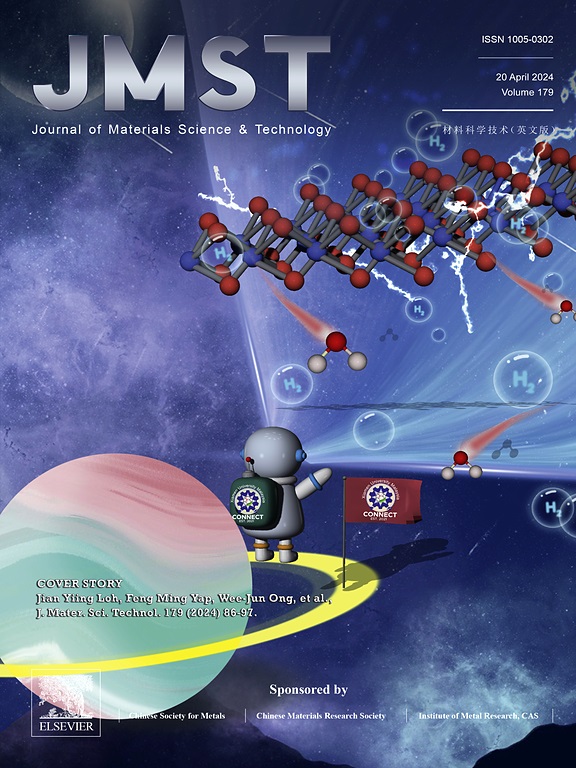Development of CoCrNi-based alloys: Insights into elemental doping and additive manufacturing
IF 11.2
1区 材料科学
Q1 MATERIALS SCIENCE, MULTIDISCIPLINARY
引用次数: 0
Abstract
CoCrNi-based medium-entropy alloys (MEAs) exhibit exceptional mechanical properties, making them promising candidates for advanced applications. Currently, most of the studies focus on CoCrNi-based alloys prepared by traditional techniques, where a combination of casting and thermo-mechanical treatment is employed to achieve a synergy of strength and ductility. However, this approach is complex and unsuitable for fabricating components with complex geometries. In contrast, laser additive manufacturing (LAM) has gained considerable attention as an innovative method to fabricate MEAs, offering a near-net-shape fabrication approach with precise microstructural control. Currently, comprehensive reviews on CoCrNi-based alloys are still limited, with few addressing the impact of LAM on these alloys. In this paper, we review the effect of elemental doping on CoCrNi-based alloys, focusing on strengthening mechanisms, recrystallization behavior, and stacking fault energy (SFE). Additionally, this review highlights the influence of LAM on CoCrNi-based alloys and compares the mechanical properties of alloys produced via traditional processing routes and LAM. Finally, the future outlook for optimizing LAM-processed (LAMed) CoCrNi-based alloys is discussed, offering insights into future research and development directions.

cocrni基合金的发展:元素掺杂和增材制造的见解
cocrni基中熵合金(MEAs)表现出优异的机械性能,使其成为先进应用的有希望的候选者。目前,大多数研究集中在传统工艺制备的cocrni基合金上,采用铸造和热处理相结合的方法来实现强度和延展性的协同作用。然而,这种方法比较复杂,不适合制造具有复杂几何形状的部件。相比之下,激光增材制造(LAM)作为一种制造mea的创新方法获得了相当大的关注,它提供了一种具有精确微结构控制的近净形状制造方法。目前,对cocrni基合金的综合研究仍然有限,很少涉及LAM对这些合金的影响。本文综述了元素掺杂对cocrni基合金的强化机制、再结晶行为和层错能(SFE)的影响。此外,本文重点介绍了LAM对cocrni基合金的影响,并比较了传统工艺路线和LAM生产的合金的力学性能。最后,对LAMed cocrni基合金的优化前景进行了展望,并对未来的研究和发展方向进行了展望。
本文章由计算机程序翻译,如有差异,请以英文原文为准。
求助全文
约1分钟内获得全文
求助全文
来源期刊

Journal of Materials Science & Technology
工程技术-材料科学:综合
CiteScore
20.00
自引率
11.00%
发文量
995
审稿时长
13 days
期刊介绍:
Journal of Materials Science & Technology strives to promote global collaboration in the field of materials science and technology. It primarily publishes original research papers, invited review articles, letters, research notes, and summaries of scientific achievements. The journal covers a wide range of materials science and technology topics, including metallic materials, inorganic nonmetallic materials, and composite materials.
 求助内容:
求助内容: 应助结果提醒方式:
应助结果提醒方式:


